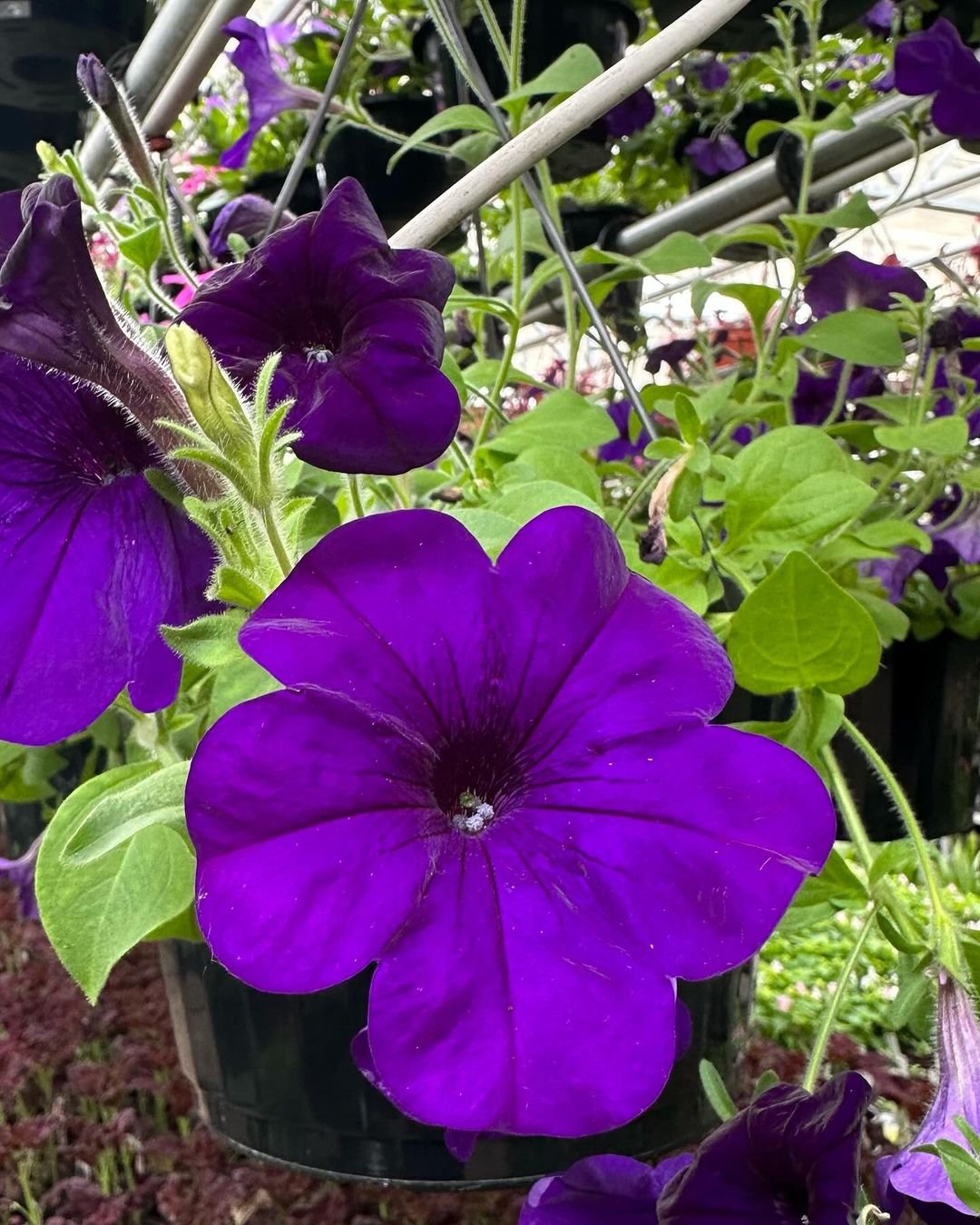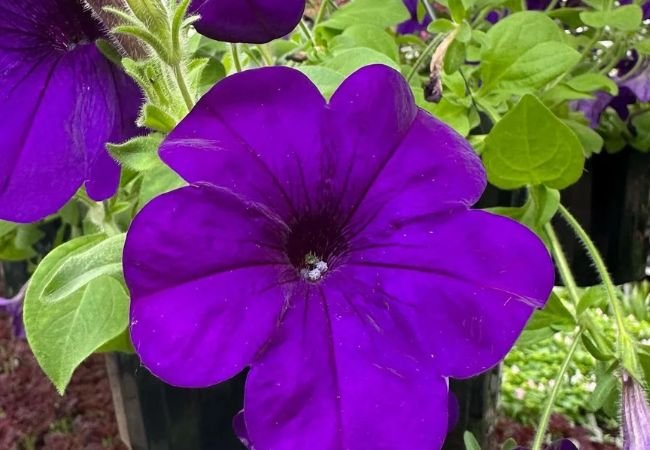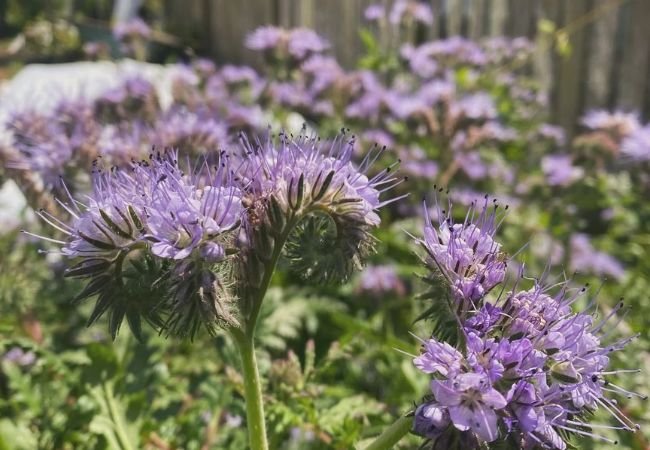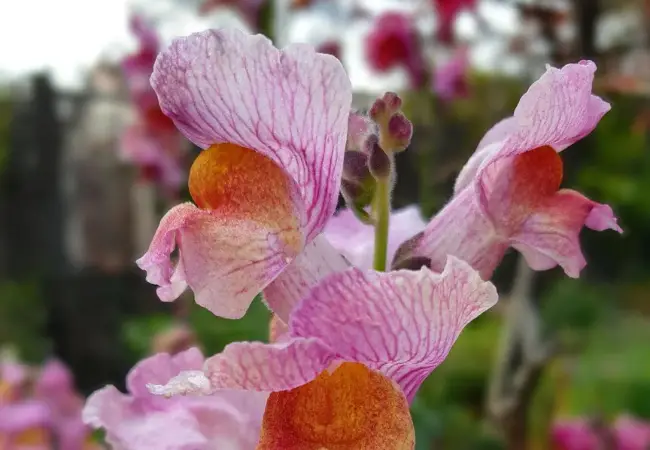Discover the beauty and ease of growing Petunias. Learn about different types, care tips and why these colorful flowers are garden favorites. Perfect for beginners and experienced gardeners alike.
Petunias are popular flowers that brighten up gardens and hanging baskets. They come in many colors and are easy to grow. Let’s learn more about these cheerful flowers!
Here’s a detailed chart for Petunia flowers:
| Category | Information |
|---|---|
| Botanical name | Petunia spp. |
| Common name | Petunia |
| Plant type | Annual (perennial in tropical climates) |
| Hardiness zone | Zones 9-11 (grown as annual in cooler zones) |
| Sun exposure | Full sun |
| Soil type | Well-drained, fertile soil |
| Watering | Regular watering, keep soil moist |
| Growth habit | Bushy, trailing |
| Height/Spread | 6-18 inches tall, 12-24 inches wide |
| Special features | Trumpet-shaped flowers in a wide range of colors including white, pink, red, purple, blue and bi-colors; long blooming season; attracts pollinators; suitable for containers, hanging baskets and garden beds |
What are Petunia Flowers?

Petunias are trumpet-shaped flowers that bloom all summer long. They grow on small, bushy plants. People love petunias because they’re pretty and bloom a lot. The USDA Plants Database provides information on petunia species.
There are four main types of petunias
- Grandiflora – Large flowers, good for gardens
- Multiflora – Smaller, more numerous flowers
- Milliflora – Tiny flowers, great for borders
- Spreading or Wave petunias – These spread out and are good for ground cover
When and Where Do Petunias Grow?
Petunias like warm weather. They grow well in most parts of the USA during spring and summer. The Clemson Cooperative Extension explains the best conditions for growing petunias.
Petunias bloom from spring until fall frost. With good care, they can provide color all season long!
How to Grow Petunias
Growing petunias is easy. Here are some tips:
- Plant them in a sunny spot. Petunias need at least 5-6 hours of sun each day.
- Use well-draining soil. Petunias don’t like to be too wet.
- Space plants about 12 inches apart.
- Pinch off the growing tips when planting to encourage bushiness.
For more planting advice, check out the University of Minnesota Extension’s guide on growing petunias.
Taking Care of Petunias
Petunias need some care to keep blooming. Here’s what to do:
- Water regularly, especially when it’s hot.
- Fertilize every 2-3 weeks with a balanced fertilizer.
- Remove dead flowers (deadhead) to encourage more blooms.
- For spreading types, trim them back if they get too long.
The Iowa State University Extension offers good tips on petunia care.
Problems Petunias Might Have
Petunias are generally healthy, but they can have some issues:
- Wilting – This might mean they need more water or have root rot from too much water.
- Yellowing leaves – This could be from too much water or not enough nutrients.
- Pests like aphids or budworms – You might need to use insecticidal soap.
The University of Massachusetts Amherst provides information on common petunia diseases and how to manage them.
What Petunias Mean
Flowers often have meanings in different cultures. Petunias can symbolize:
- Anger and resentment
- Desire
- Never losing hope
In the USA, petunias are often seen as cheerful, friendly flowers. The University of Vermont Extension shares interesting facts about petunias.
Why People Love Petunias
There are many reasons why petunias are popular:
- They bloom for a long time.
- They come in many bright colors.
- They’re easy to grow.
- They work well in gardens, pots, and hanging baskets.
- They attract hummingbirds and butterflies.
The Penn State Extension discusses the benefits of growing petunias in your garden.
Petunias are a great choice if you want to add lots of color to your garden or porch. With a little care, you can enjoy their beautiful blooms all summer long!
For more gardening tips and plant care guides, visit usagardenhub.com.







3 Comments on “Petunias : Colorful Garden Favorites”